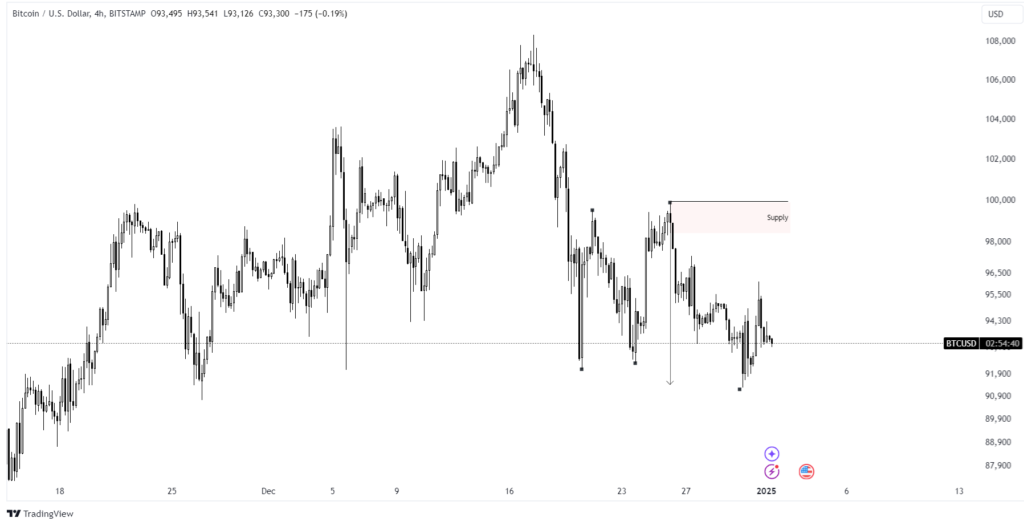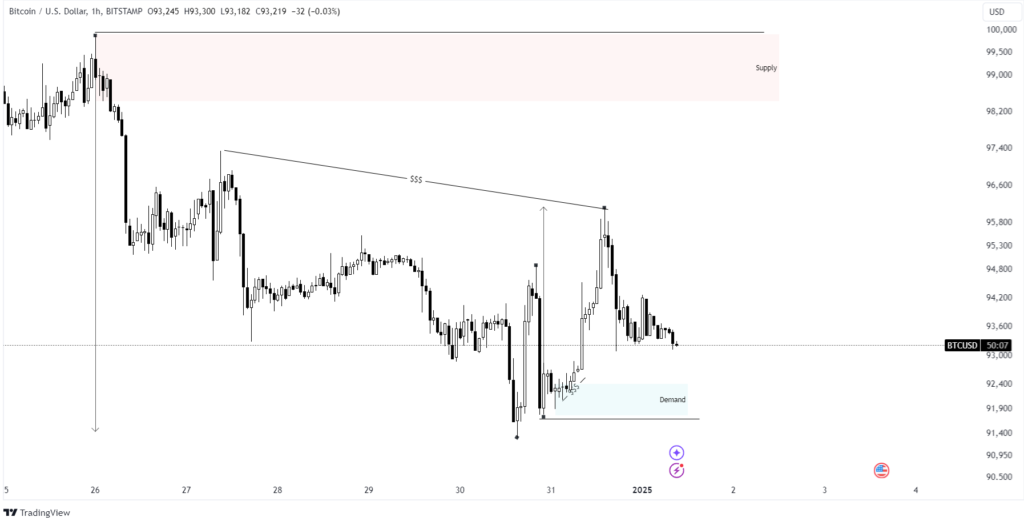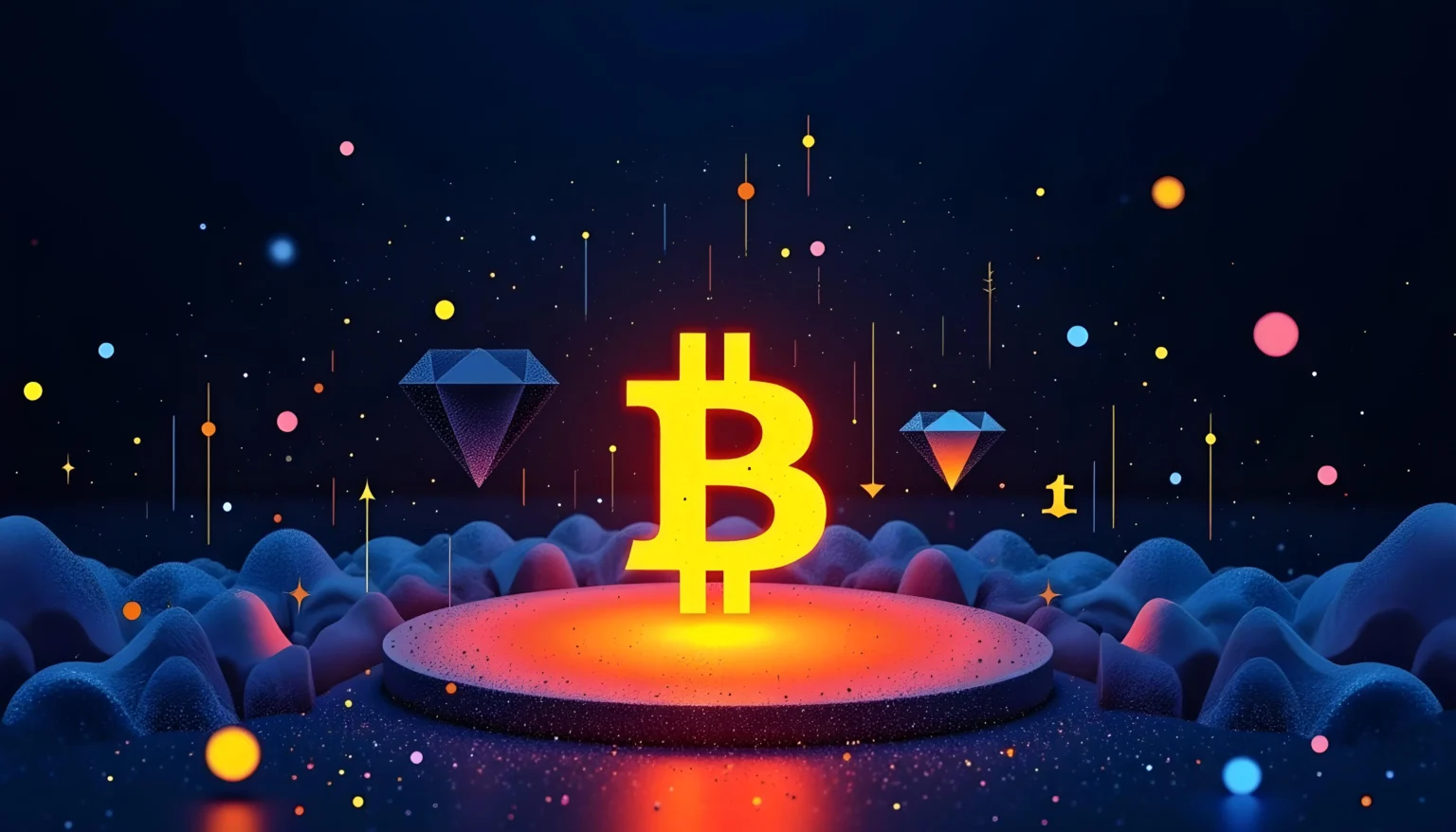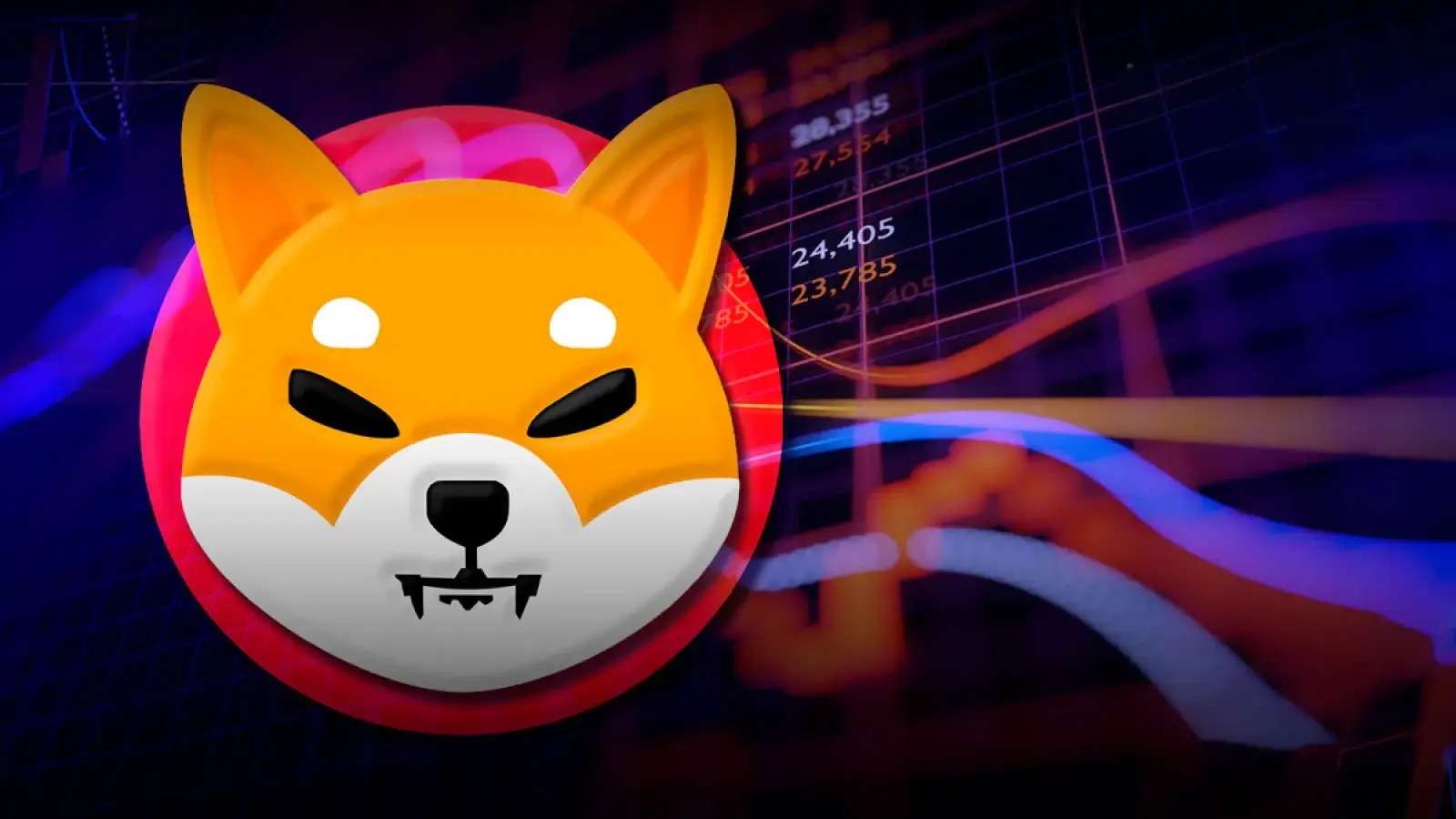H4 H1 Bitcoin Trends are crucial in understanding Bitcoin’s short- and long-term price patterns, influencing trading decisions and market behaviour. Bitcoin’s market structure is always changing, so traders must stay alert and change their tactics as needed. Knowing how prices have changed over many different periods can help you predict how the market might change. H4 (4 hours) and H1 (1 hour) are the most important times to consider.
Each provides unique insights that could influence short- and long-term trading decisions. However, outside factors, like less market action during the holidays, could greatly affect price changes. This piece will discuss two possible trade options based on studying the H4 and H1 timeframes. We will also break down the current market situation for Bitcoin. We will also discuss holiday trading issues and offer tips for navigating these risky times.
H4 Timeframe Bitcoin Bearish Momentum
The 4-hour (H4) period shows Bitcoin’s price movement more broadly. This period’s bearish structure is notable. A succession of lower highs and lows indicates downward price pressure. This shows that Bitcoin is in a medium-term downturn, and traders should be cautious as Bitcoin reaches the supply zone. The supply zone in the H4 timeframe is an important barrier. Short traders may enter if Bitcoin returns to this zone. Bitcoin’s history at comparable levels shows that price tends to halt or reverse when it approaches the supply zone.

Traders seek price rejection at these levels to confirm short positions. Strategic supply zone entry may be crucial for bearish traders. Be patient and wait for candlestick patterns or momentum indicators that indicate a reversal or continuation of the negative trend. Short bets may be considered if the market rejects this zone, reinforcing the negative view.
H1 Chart Demand Zone
The picture changes when you move to 1 hour (H1). The higher highs and higher lows on the H1 chart show the price is increasing. This means that Bitcoin may go up, but the market goes through cycles where prices go down and stay the same before a trend starts up again. Bitcoin might need to drop to raise more cash before it can rise again. Before going up, Bitcoin often returns to important levels to meet stop orders or full buy orders. If Bitcoin goes back up, it might find support in the H1 demand zone.

Many buyers buy Bitcoin when it’s in the demand zone because they think it will increase. If the price returns from this level, it could lead to the next move up into the supply zone on the H4 chart. Keep in mind that this favourable turn is not a given. Even though the H1 market structure looks good, Bitcoin’s price changes a lot, especially when there isn’t much going on, like during the holidays. To go long, buyers should wait for a demand zone return.
Holiday Trading Challenges
As the holidays approach, Bitcoin volume and liquidity fall. This is significant for traders, as a decrease in activity could potentially increase price volatility. Price swings may result from institutional trader absence and volume reduction. Low market activity raises bid-ask spreads and execution delays. Lower liquidity may also increase Bitcoin price swings. Stable traders may be at risk in these unpredictable markets. Holiday traders must be careful. More frequent and larger price swings make risk management more important. Traders should limit position sizes, tighten stop losses, and avoid excessive leverage to hedge market fluctuations.
Also Read: Bitcoin ETF Impact Driving Record Returns in 2024
Summary
This piece discusses Bitcoin’s market structure and trade strategies in two important phases: H4 (4-hour) and H1. Bitcoin’s lower highs and lows in the H4 period show a bearish trend. This means prices are decreasing, and buyers should be careful as the supply zone approaches. Short players may try to get in if the price returns to this area.
In the H1 era, the market is going up, with higher highs and lower lows, which means prices could go up. But Bitcoin might have to go down first to meet stop orders before it can start moving up again. People who want to buy Bitcoin should wait until it returns to the demand zone before going long.
The piece also discusses the difficulties of dealing over the holidays when the market is less active and liquid. This can make prices volatile, increase bid-ask gaps, and cause processing delays. Traders should be careful, control their risk well, and avoid using too much debt during this time.









